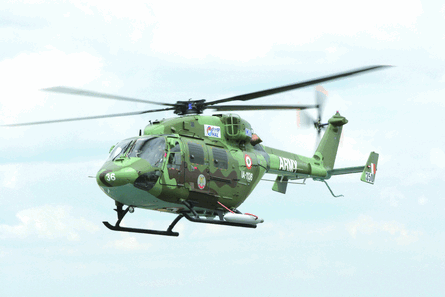Hindustan Aeronautics' ambitions of becoming an aircraft exporter have received a major boost, with Ecuador's air force to order seven Dhruv advanced light helicopters from the Indian company.
"The contract is likely to be signed within a few weeks. HAL will deliver the first helicopter in six months," says the state-owned firm, which beat EADS subsidiary Eurocopter, Israel's Elbit Systems and Russia's Kazan for the $51 million deal.
The Ecuador sale is significant, as it represents HAL's first win in a competitive overseas tender. It has been promoting the Dhruv internationally for several years, but the only sales so far had been of one unit to Israel and two to Nepal's army aviation wing.
 |
|---|
© Messe Berlin |
HAL is especially active in South America, where it narrowly lost to the Bell 412 in a Chilean air force 12-aircraft tender in 2007. It is also pursuing Dhruv sales in Bolivia, Peru and Venezuela, as well as in Indonesia, Malaysia and Turkey. While offers tend to be priced lower than its competitors, there have been doubts about the company's ability to provide adequate after-sales support to potential customers.
Deliveries of the Dhruv began in India in 2002, almost 20 years after the programme's inception and 10 years after first flight. Almost 80 have now entered service with the Indian air force, army, navy and coastguard, and it is projected that HAL will manufacture up to 40 units annually for the services.
There have been unconfirmed media reports of unhappiness about the Dhruv's performance among some customers, and the Hindustan Times reported in early June that the navy may not order additional helicopters. HAL officials, however, remain confident that the various services will confirm additional orders in the coming years.
The 5.5t Dhruv is powered by two HAL-Turbomeca Shakti turboshaft engines, and it has a range of 660km (355nm), and a service ceiling of 14,800ft (4,500m). The military version of the utility helicopter can be modified for anti-submarine and light attack missions. HAL is also promoting a civilian version, which can be used for VIP transport, search and rescue, disaster relief, offshore and maritime, policing and air-ambulance roles.
Source: Flight International













